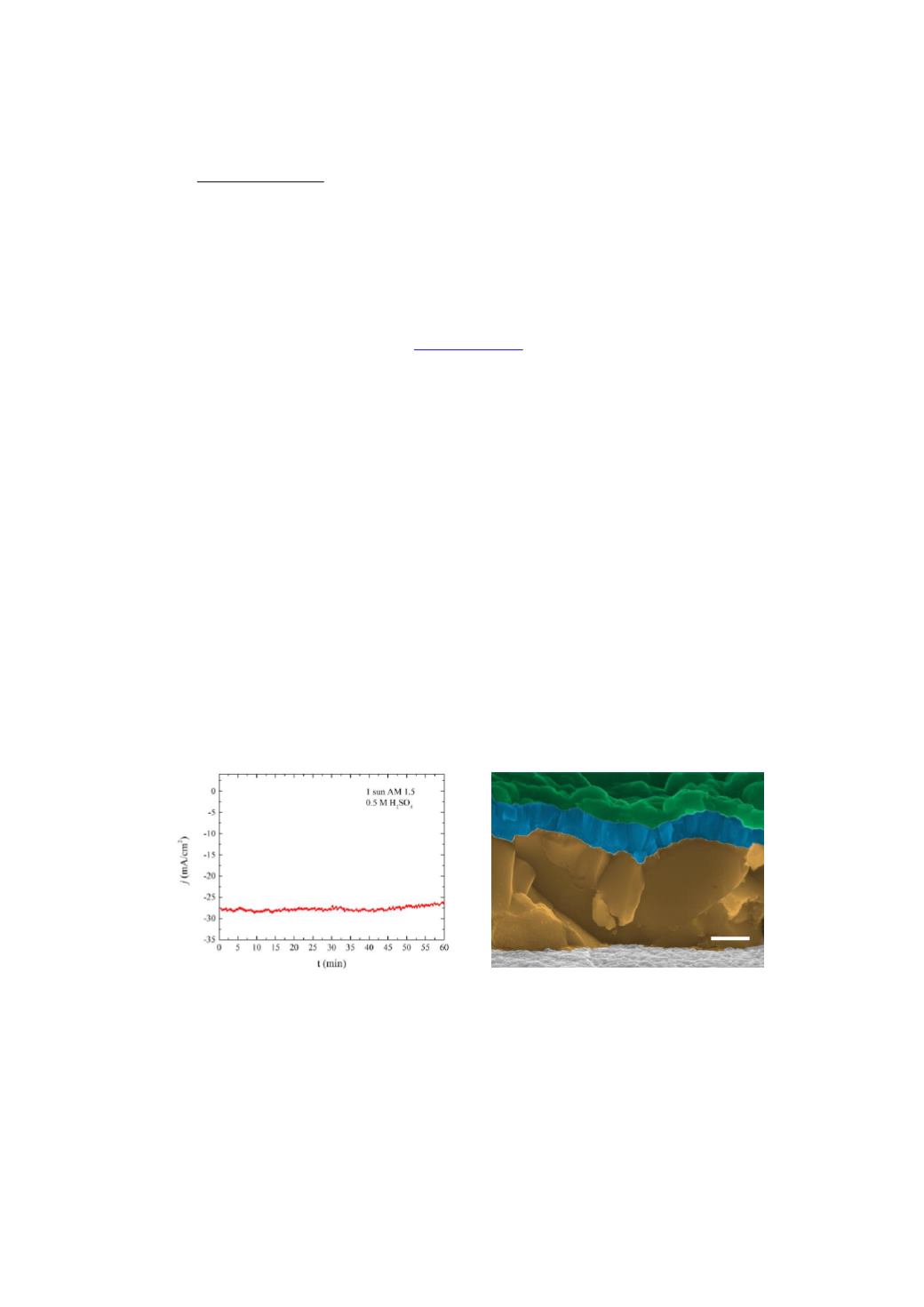
Calcogenide based photocathodes for sustainable solar hydrogen
Carles Ros
1
, Teresa Andreu
1,
*, Sergio Girado
1
, Haibing Xie
1
, Yudania Sánchez
1
, Nina Carretero
1
,
Edgardo Saucedo
1
and Juan Ramon Morante
1,2
1
Catalonia Institute for Energy Research, IREC, Jardins de les Dones de
Negre 1, 08930 Sant Adrià de Besòs, Barcelona, Spain
2
Departament d'Electrònica, Universitat de Barcelona, Martí i Franquès, 1, 08028
Barcelona,Spain
An important approach towards an efficient and sustainable economy is storing solar energy
into chemical fuels through photoelectrochemical (PEC) water splitting. Cheap and earth
abundant materials, optimal band gap and electrolyte adaptability is mandatory for large scale
industrialization and deployment of PEC technology.
Mathematical calculations have shown that dual absorber tandem photocathode/photoanode
configurations could overcome the required efficiencies for large scale industrialization[1].
Chalcopyrite CI(G)S, and its earth abundant similar, kesterite CZTS/Se solar cells bandgap can
be tuned from 1.0 to 1.5 eV with stoichiometric modification[2], with state of the art efficiencies
ranging over 20 %. This versatility makes them very interesting to be implemented in PEC water
splitting[3]. In this work, we demonstrate that titanium dioxide grown by ALD can be used as a
transparent protective and conductive layer for having a high throughput CZTS/Se and CIGSe
based photocathode for water splitting. The role of i-ZnO and AZO layers in the electron
transport mechanisms through the deposited TiO
2
film has been also evaluated. Furthermore,
TiO
2
protected photocathodes have been tested in electrolytes with pH ranging from 0.3 to 14,
presenting promising stability results.
Fig. 1. Stability test at 0 V vs RHE (
a
) and Cross section of a CZTS/CdS/ITO/TiO
2
sample (
b
)
References
[1]
S. Hu, C. Xiang, S. Haussener, A. D. Berger, and N. S. Lewis,
Energy Environ. Sci.
, vol. 6, no. 10, p. 2984,
Sep. 2013.
[2]
S. Giraldo, M. Neuschitzer, T. Thersleff, S. López-Marino, Y. Sánchez, H. Xie, M. Colina, M. Placidi, P.
Pistor, V. Izquierdo-Roca, K. Leifer, A. Pérez-Rodríguez, and E. Saucedo,
Adv. Energy Mater.
, vol. 5, no. 21,
pp. 1–6, 2015.
[3]
C. Ros, T. Andreu, S. Giraldo, Y. Sánchez, and J. R. Morante,
Sol. Energy Mater. Sol. Cells
, pp. 1–5, 2016.
500 nm
I 27
-143-


